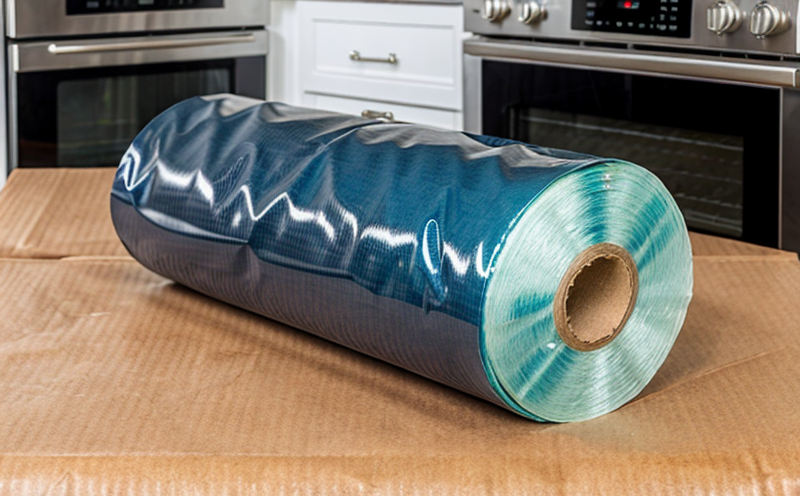IEC 62631 Dielectric Properties Testing of Plastic Wraps
The International Electrotechnical Commission (IEC) standard IEC 62631 is a critical document for the evaluation of dielectric properties in plastic materials, especially those used in household wraps and covers. This test is essential to ensure that these plastics can withstand high voltage and maintain their integrity under various conditions, which are crucial factors in the safety and durability of products like packaging films and insulation materials.
The dielectric properties of a material refer to its ability to store electrical energy when subjected to an electric field. In household wraps, this is particularly important because these materials often come into contact with high voltage during manufacturing processes or use under extreme environmental conditions. Ensuring that the plastic wrap maintains its insulating properties is vital for preventing short circuits and ensuring safe use.
The IEC 62631 test method involves placing a specimen of the plastic wrap between two electrodes in an electric field. The voltage applied to this setup is gradually increased until breakdown occurs, indicating the dielectric strength of the material. This procedure helps identify potential weaknesses within the plastic that could lead to failure during use.
For accurate testing, it's important to follow precise specimen preparation procedures. Specimens should be cut from large sheets of plastic wrap with dimensions specified by the standard. These specimens are then conditioned at specific temperatures and humidity levels for a set period before undergoing the electrical test. The conditioning helps ensure that any moisture or temperature-induced changes in the material do not affect the test results.
The equipment used for this test includes high-voltage generators capable of producing controlled electric fields, as well as specialized test chambers designed to maintain consistent environmental conditions throughout the testing process. Modern laboratories also employ sophisticated data acquisition systems to record and analyze the breakdown voltage data accurately.
Once the tests are complete, detailed reports are generated that include all relevant parameters such as breakdown voltage, capacitance, and dielectric loss factor. These reports provide valuable insights into how well the plastic wrap will perform in real-world applications. They can help quality managers make informed decisions about product design improvements or material selection.
Understanding the results from IEC 62631 testing is crucial for ensuring compliance with industry standards and regulations while also enhancing product performance. By adhering to this standard, manufacturers can create safer, more reliable products that meet both consumer expectations and regulatory requirements.
| Applied Standards | Description |
|---|---|
| IEC 62631 | Defines the methodology for determining dielectric properties of solid insulating materials, including those used in household wraps. |
| ASTM D149 | Alternative method using air as a medium between electrodes instead of oil. |
| EN 60262 | Covers the general requirements for solid insulating materials used in electrical apparatus and equipment up to 50 kV. |
Frequently Asked Questions
Benefits
By conducting IEC 62631 dielectric properties testing, manufacturers gain several key benefits:
- Enhanced Product Safety: Ensures that plastic wraps used in household applications do not pose electrical hazards.
- Improved Durability: Identifies potential weaknesses within the plastic before they manifest as failures during use.
- Regulatory Compliance: Helps meet industry standards and regulations, reducing the risk of non-compliance fines or recalls.
- Informed Decision-Making: Detailed reports provide valuable data for improving product design and selecting appropriate materials.
These benefits contribute to the overall quality and reliability of products, fostering customer trust and satisfaction.
Eurolab Advantages
EuroLab offers a range of advantages when it comes to conducting IEC 62631 dielectric properties testing:
- Accurate and Reliable Results: Our state-of-the-art facilities ensure precise measurements and repeatable results.
- Experienced Professionals: Our team consists of highly skilled engineers and scientists with extensive experience in plastics testing.
- Comprehensive Reporting: We provide detailed reports that go beyond basic test data, offering valuable insights into product performance.
- Custom Solutions: EuroLab can tailor its services to meet the specific needs of individual clients, ensuring comprehensive support throughout the testing process.
Choose EuroLab for your IEC 62631 dielectric properties testing needs and experience unparalleled accuracy, reliability, and expertise in plastic materials testing.





